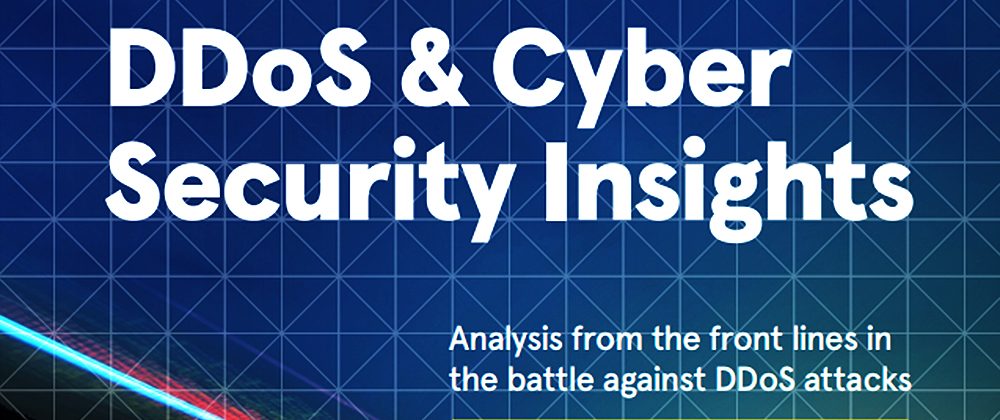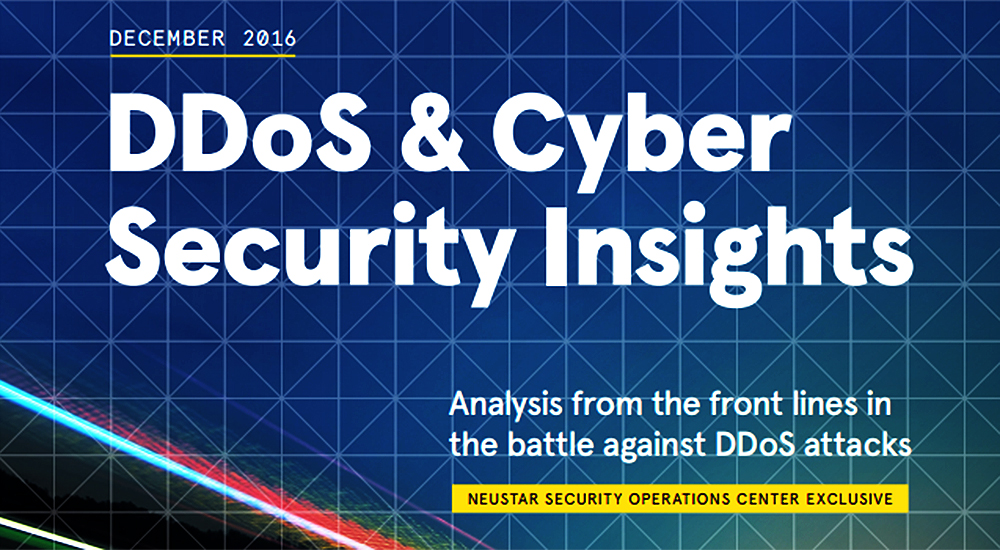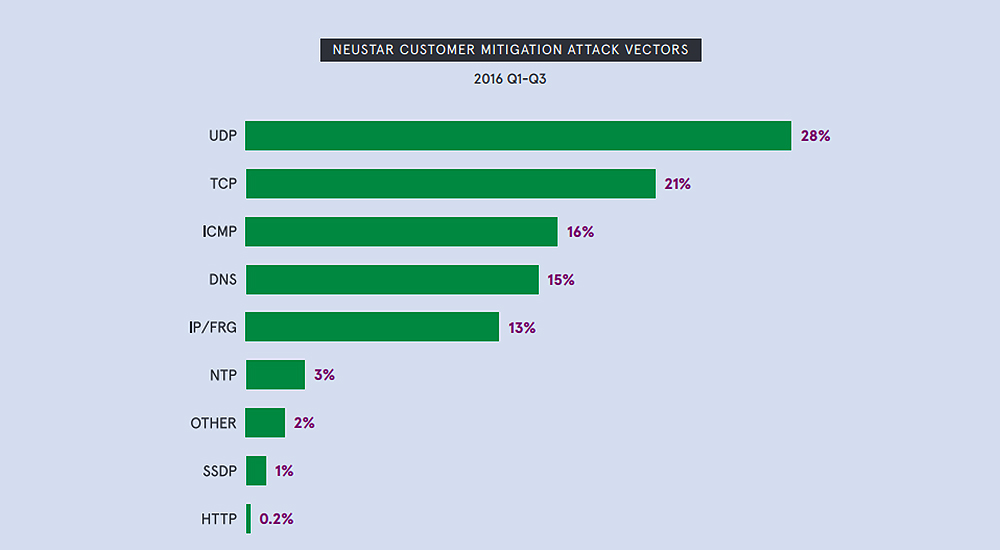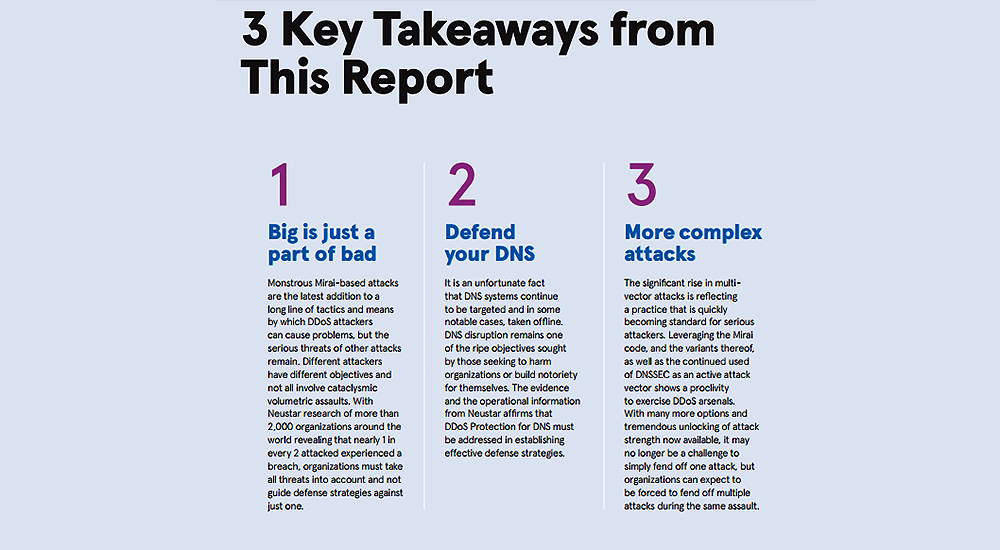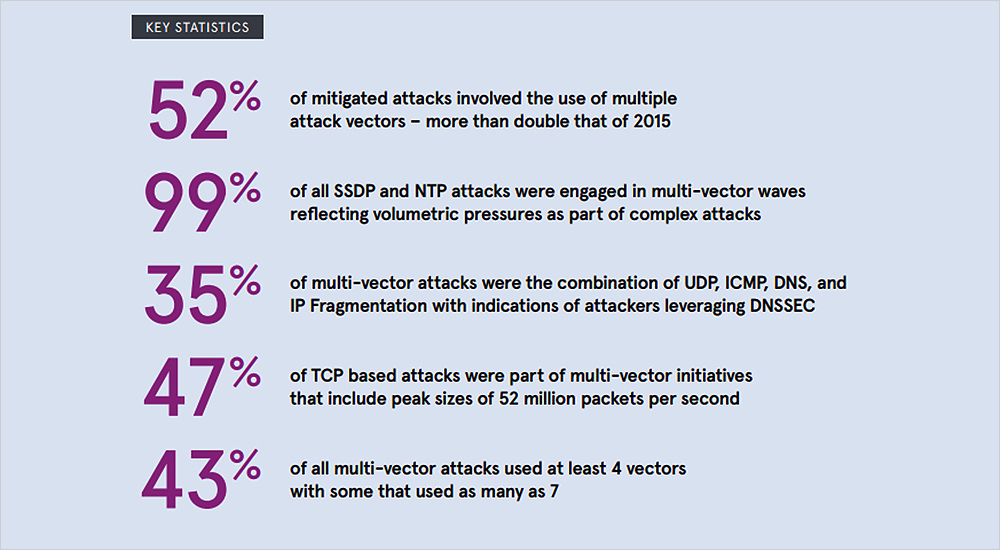Neustar, a neutral provider of real-time information services, announced the publication of DDoS and Cyber Security Insights, an in-depth research report that provides statistical analysis of the distributed denial of services attack and mitigation data collected through Neustar SiteProtect. The report examines the growth of DDoS attacks during 2016, providing specific insight into multiple attack vectors, such as DNSSEC amplification and Internet-of-things IoT botnets.
“The DDoS attack landscape has become increasingly complex in 2016 because there is no singular goal behind these attacks; some seek to disrupt services, while others serve as smokescreens to breach data,” said Rodney Joffe, SVP and Fellow, Neustar. “Organisations must remain vigilant against conventional attacks, even as new threats are realised in 2017.”
DDoS and Cyber Security Insights analyses attack and mitigation data collected through Neustar SiteProtect, a global DDoS mitigation network, from January 1, 2016 through November 30, 2016.
Key findings include:
Increasing frequency of DDoS attacks
The frequency of DDoS attack mitigations by Neustar has increased 40% compared to the same period of time in 2015.
Eruption of Multi-vector attacks
Multi-vector attacks, which combine attack vectors to confuse defenders and supplement attack volume, increased 322% and accounted for 52% of the attacks mitigated by Neustar. UDP, TCP and ICMP comprise the three most popular attack vectors, which were leveraged in more than 50% of attacks.
Vulnerability of DNS and DNSSEC
DNS-based attacks increased 648% with many attackers leveraging DNSSEC amplification to generate massive volumetric pressure. Previous Neustar research, DNSSEC: How Savvy DDoS Attackers Are Using Our Defenses Against Us, determined that the average DNSSEC amplification factor for a DNSSEC signed zone was nearly 29 times greater than the initial query.
IoT botnets emerge as DDoS attack tools
The threat of IoT botnets was realised in 2016, which was popularised by Mirai. Mirai and similar types of malware compromise IoT device credentials to enroll them into botnets, which are activated by command and control servers. As these code assemblies are published, new developments continue to emerge, such as persistent device enrollment, which enables botnet operators to maintain control of a device even after it is rebooted.
“Mirai signals a watershed moment for DDoS attacks, where the bad guys finally turned the Internet back on its users,” said Joffe. “It is imperative to invest in effective DDoS protection now because the threat landscape has fundamentally changed.


